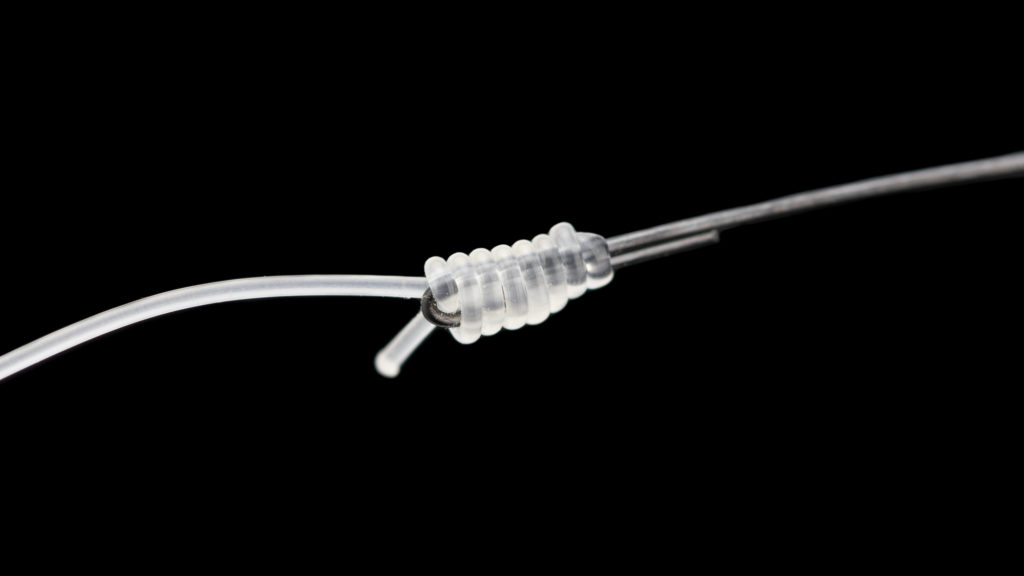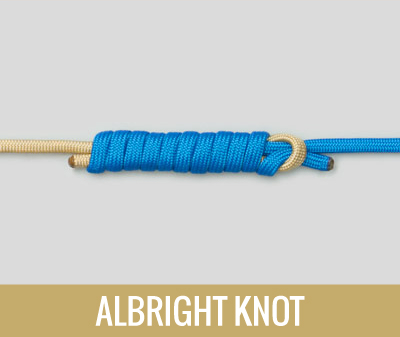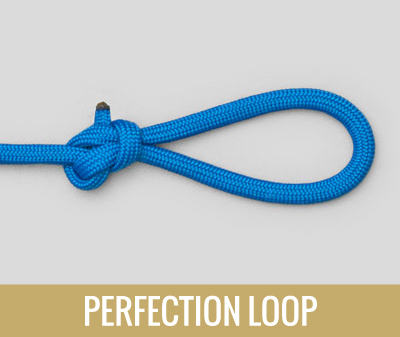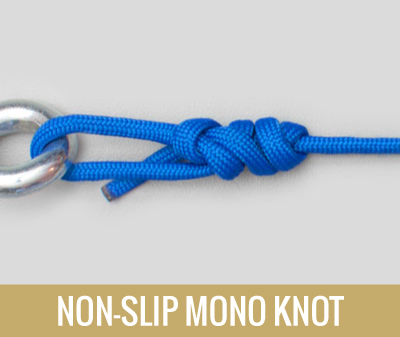TYING A LEADER FOR PIKE ON THE FLY
In this article we are going to go over how to construct a leader with a metal tippet to stand up to the aggressive and sharp toothed Esox lucius, or as many know it, the northern pike. Now, you can save yourself some knot tying trouble and go with preconstructed tapered leaders from companies like Rio or Scientific Angler. However, these leaders don’t come cheap and we believe they are a little on the long side. On the other hand, if you are one of those fly fishermen that likes to make everything yourself, then this article is for you.

LEADER CONSTRUCTION
Pike flies come in all shapes and sizes as long as the size is extra large. In order to turn over these beefy pool noodles, you need a leader with some umph to it. Compared to a trout leader, we are going to go relatively short and much…much more heavy.
The leader line we will be using for our pike haulers are from Seaguar. Seaguar fluorocarbon lines offer unparalleled abrasion resistance, knot strength, tensile strength, toughness, and the ability to disappear in the water. Seaguar is our go-to but any of your favorite fluorocarbon or monofilament lines will work here. Monofilaments are an option, however, we like the sinking ability of fluorocarbon to keep up with our sinking fly lines.
Pike flies come in all shapes and sizes as long as the size is extra large.
To create the stiff backbone, we are going to start out with 24 – 48 inches of 30-pound Seaguar Blue Label Fluorocarbon. This beefy line will give you the ability to rollover those monstrously large flies for old Mr. Snaggletooth. At one end we are going to tie a Perfection Loop. This knot allows us to easily attach our leader to the welded loop at the end of our fly line. Since we aren’t worried about gently landing a dry fly with delicate precision, this is as far as we go for our leader. One piece of line…that’s it. You may see articles all over the interwebz discussing fancy tapered leaders comprising of three line sizes to create a taper but we just don’t feel that multiple lines are necessary.

Loop to loop connection using the Perfection Loop. Use this knot to easily attach the leader to the welded loop at the end of the fly line.
BITE WIRE TIPPET SETUP
What really sets this leader apart from our wimpy little fluorocarbon trout leaders are the bite wire tippet. Without this line of protection, those razor blade teeth would slice through lesser line materials found in your trout arsenal.
Our favorite go-to wire tippet is an offering from Rio called Powerflex Wire Bite Tippet in the 20lb variant. They offer 20, 30, and 40 pound sizes. Rio says their Wire Bite is, “tough, flexible, nylon-coated wire that is super easy to tie a knot with – ideal for sharp-toothed critters like Pike.”

Rio's Powerflex Wire Bite Tippet in 20lb test.
To start the connection of the wire to the mono, rip off between 8 – 12 inches of the Rio Bite Wire. Tie the terminal end of the 30-pound Seaguar to the Rio Wire Bite using an Albright Knot and boom! You are ready to rip, throw, tear, snag, set, and any other destructive event you can throw at this leader.
The Albright Knot is my go to knot for this connection. Its strong characteristic is its ability to join different types of fishing line, e.g., monofilament to wire and also join line with markedly different diameters. Likewise, there are other options for this knot. Some of the Eastbound and Trout guys prefer a loop to loop connection using the Perfection Knot. This knot setup allows for easy wire tippet change outs when it starts to get frayed or kinked. Either knot will do the job. However, if you are like me and the open loops and knots of the Perfection Knot flare your OCD, then the smooth beautiful lines of the Albright Knot is where it’s at!

The Albright Knot is the go-to for connecting the leader to the wire tippet.
For a little added security I like to add Loon Outdoors UV Knot Sense to the knot. This extra step will smooth and strengthen the knot. However, this step is not necessary.
HOW TO TIE A PIKE FLY TO A WIRE TIPPET
For all you fly fisherman who are well versed at chucking streamers for trout, this section might not be anything new. A nice knot for tying any type of streamer, big or small, is the Non-Slip Mono Knot. The Non-Slip Mono makes a very strong fixed loop in the end of the fishing line. Because the loop doesn’t grip the lure, it makes a flexible attachment and allows a more natural action. The extra action might be the difference between a viscous pike strike or just a look. This knot also has another valuable characteristic for the pike fisherman. The final resting spot of the tag end is very unique in that it points backwards towards the hook eye. When you are stripping across the top of a pike filled weed bed, having less weed grabbing materials that could cause hang ups might be the difference between a heavy net and an untouched net.

Another option aside from the direct knot to the fly is the addition of a Cross-Lok Snap. This metal snap might interest the fisherman that likes to throw their entire streamer collection until the magic ticket hits. Like with the direct fly connection, the Non-Slip Mono Knot is still used to tie in the snap.
Time for a little section I like to call, “Tips with Eric”. When tying any of the aforementioned knots, make sure to have pliers or another type of knot assist tool on hand to aide in setting your knots. Remember, these lines are both thick and made of metal. Take the time to ensure your knots are set and locked in. Also, remember that saliva!
GO TO BATTLE
With the leader hot off the tying table, grab your 8 – 10 weight rod, attach that pool noodle size fly and hit the water. You can rest assured that you are armed with the best weapon possible for these big aggressive predators.
KNOT TUTORIALS
AUTHOR

TYING A LEADER FOR PIKE ON THE FLY
In this article we are going to go over how to construct a leader with a metal tippet to stand up to the aggressive and sharp toothed Esox lucius, or as many know it, the northern pike. Now, you can save yourself some knot tying trouble and go with preconstructed tapered leaders from companies like Rio or Scientific Angler. However, these leaders don’t come cheap and we believe they are a little on the long side. On the other hand, if you are one of those fly fishermen that likes to make everything yourself, then this article is for you.
LEADER CONSTRUCTION
Pike flies come in all shapes and sizes as long as the size is extra large. In order to turn over these beefy pool noodles, you need a leader with some umph to it. Compared to a trout leader, we are going to go relatively short and much…much more heavy.
The leader line we will be using for our pike haulers are from Seaguar. Seaguar fluorocarbon lines offer unparalleled abrasion resistance, knot strength, tensile strength, toughness, and the ability to disappear in the water. Seaguar is our go-to but any of your favorite fluorocarbon or monofilament lines will work here. Monofilaments are an option, however, we like the sinking ability of fluorocarbon to keep up with our sinking fly lines.
Pike flies come in all shapes and sizes as long as the size is extra large.
To create the stiff backbone, we are going to start out with 24 – 48 inches of 30-pound Seaguar Blue Label Fluorocarbon. This beefy line will give you the ability to rollover those monstrously large flies for old Mr. Snaggletooth. At one end we are going to tie a Perfection Loop. This knot allows us to easily attach our leader to the welded loop at the end of our fly line. Since we aren’t worried about gently landing a dry fly with delicate precision, this is as far as we go for our leader. One piece of line…that’s it. You may see articles all over the interwebz discussing fancy tapered leaders comprising of three line sizes to create a taper but we just don’t feel that multiple lines are necessary.

Loop to loop connection using the Perfection Loop. Use this knot to easily attach the leader to the welded loop at the end of the fly line.
BITE WIRE TIPPET SETUP
What really sets this leader apart from our wimpy little fluorocarbon trout leaders are the bite wire tippet. Without this line of protection, those razor blade teeth would slice through lesser line materials found in your trout arsenal.
Our favorite go-to wire tippet is an offering from Rio called Powerflex Wire Bite Tippet in the 20lb variant. They offer 20, 30, and 40 pound sizes. Rio says their Wire Bite is, “tough, flexible, nylon-coated wire that is super easy to tie a knot with – ideal for sharp-toothed critters like Pike.”

Rio's Powerflex Wire Bite Tippet in 20lb test.
To start the connection of the wire to the mono, rip off between 8 – 12 inches of the Rio Bite Wire. Tie the terminal end of the 30-pound Seaguar to the Rio Wire Bite using an Albright Knot and boom! You are ready to rip, throw, tear, snag, set, and any other destructive event you can throw at this leader.
The Albright Knot is my go to knot for this connection. Its strong characteristic is its ability to join different types of fishing line, e.g., monofilament to wire and also join line with markedly different diameters. Likewise, there are other options for this knot. Some of the Eastbound and Trout guys prefer a loop to loop connection using the Perfection Knot. This knot setup allows for easy wire tippet change outs when it starts to get frayed or kinked. Either knot will do the job. However, if you are like me and the open loops and knots of the Perfection Knot flare your OCD, then the smooth beautiful lines of the Albright Knot is where it’s at!

The Albright Knot is the go-to for connecting the leader to the wire tippet.
For a little added security I like to add Loon Outdoors UV Knot Sense to the knot. This extra step will smooth and strengthen the knot. However, this step is not necessary.
HOW TO TIE A PIKE FLY TO A WIRE TIPPET
For all you fly fisherman who are well versed at chucking streamers for trout, this section might not be anything new. A nice knot for tying any type of streamer, big or small, is the Non-Slip Mono Knot. The Non-Slip Mono makes a very strong fixed loop in the end of the fishing line. Because the loop doesn’t grip the lure, it makes a flexible attachment and allows a more natural action. The extra action might be the difference between a viscous pike strike or just a look. This knot also has another valuable characteristic for the pike fisherman. The final resting spot of the tag end is very unique in that it points backwards towards the hook eye. When you are stripping across the top of a pike filled weed bed, having less weed grabbing materials that could cause hang ups might be the difference between a heavy net and an untouched net.

Another option aside from the direct knot to the fly is the addition of a Cross-Lok Snap. This metal snap might interest the fisherman that likes to throw their entire streamer collection until the magic ticket hits. Like with the direct fly connection, the Non-Slip Mono Knot is still used to tie in the snap.
Time for a little section I like to call, “Tips with Eric”. When tying any of the aforementioned knots, make sure to have pliers or another type of knot assist tool on hand to aide in setting your knots. Remember, these lines are both thick and made of metal. Take the time to ensure your knots are set and locked in. Also, remember that saliva!
GO TO BATTLE
With the leader hot off the tying table, grab your 8 – 10 weight rod, attach that pool noodle size fly and hit the water. You can rest assured that you are armed with the best weapon possible for these big aggressive predators.
KNOT TUTORIALS
AUTHOR








